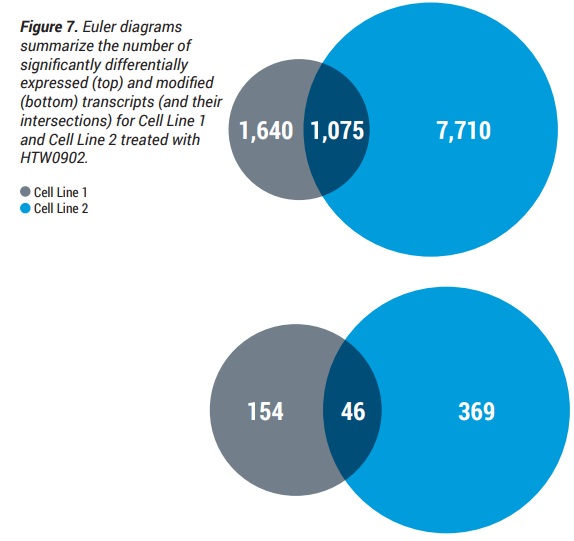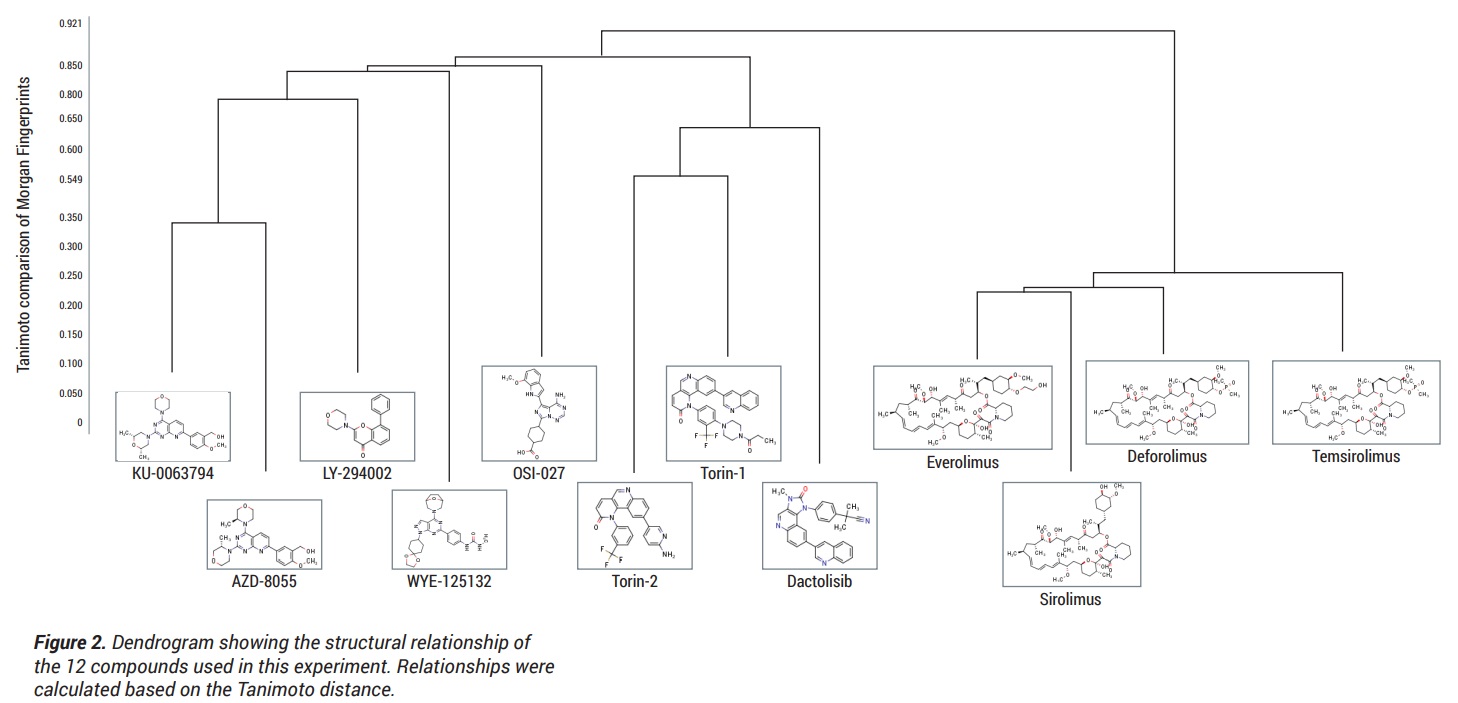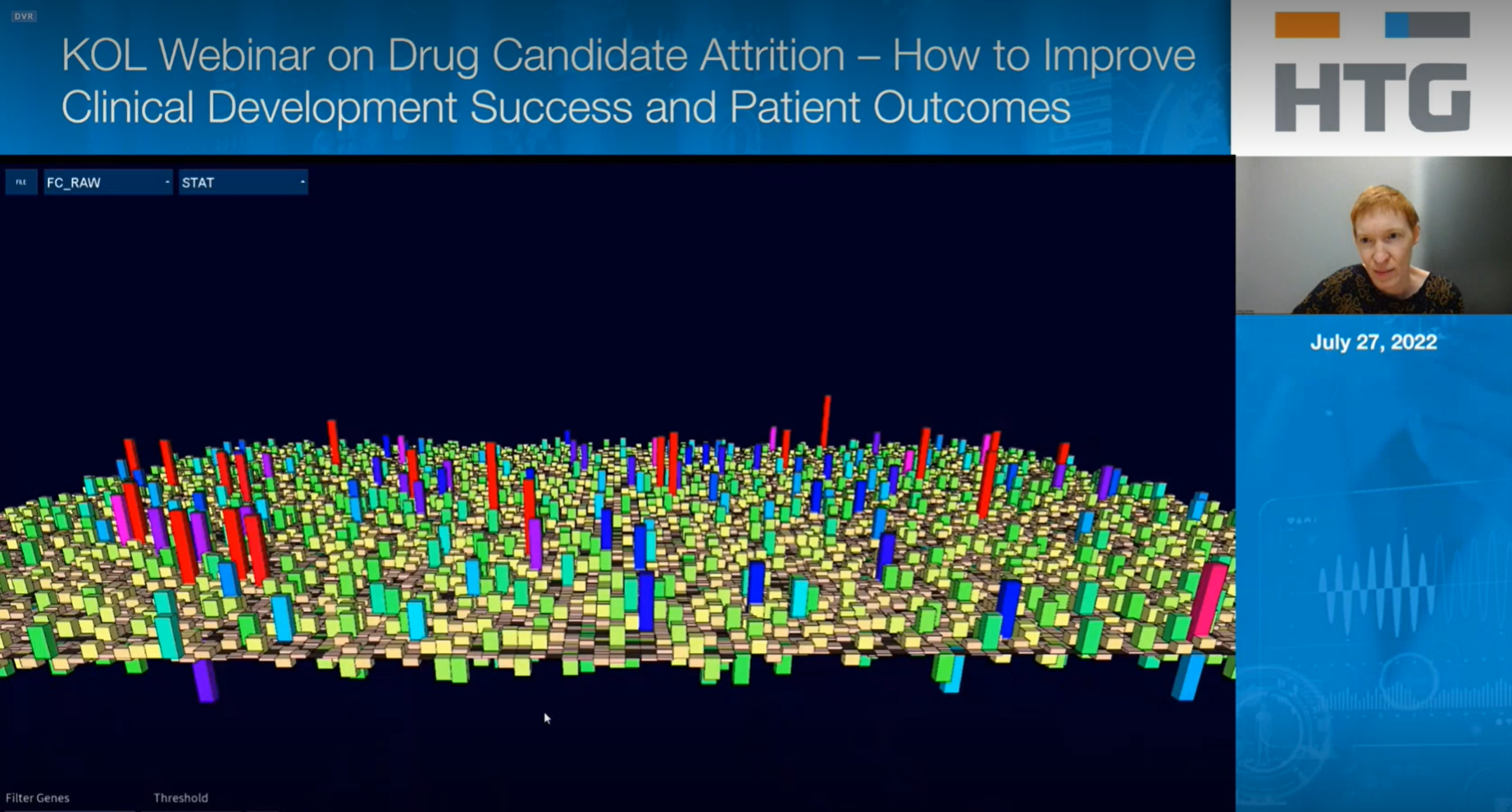Transcriptome-informed Drug Design
by Joe Alvin, PhD
Background
The high cost and time investment of pharmaceutical development and approval has been accompanied by extremely high failure rates. Traditional preclinical screening methods produce only limited variables and endpoints for scientists to analyze. Limiting analysis to these traditional assessments with small dynamic ranges and low dimensional complexity limits what scientists can evaluate and apply to their discovery efforts. In contrast, HTG EdgeSeqTM (EdgeSeq) technology and HTG Transcriptome Panel (HTP) can be used to produce a comprehensive and quantitative map of a cell’s transcriptomic response to xenobiotic perturbation.
Building on a previously published white paper showing initial proof of concept, HTG technology is showcased as a systems-level analysis platform as an addition to drug discovery. The second white paper, titled “Transcriptome-informed Drug Design: A Tale of Six Compounds”, is a case study in the utility of using HTG technology to provide transcriptome-based profiles to inform the molecule design process.
Key Findings
The compounds evaluated consisted of known inhibitors of the target of interest, novel in silico designed molecules, and natural products. These compounds were tested on two cell lines with one representing the intended disease state. Of the screened compounds, compound HTW0902 produced differentiated effects between the two cell types. Following the threads of perturbed pathways, authors were able to identify and explain this apparent selectivity.

The first white paper highlighted how HTG’s profiling technology differentiated compounds with minor structural differences on the rapamycin pharmacophore.

While not highlighted in the second paper, the screen included a pair of enantiomers. While neither enantiomer elicited potent effects on the chosen target, only one of the isomers significantly reduced transcript levels of BAD, a positive regulator of apoptosis.
Takeaway
EdgeSeq technology can be used to enable researchers to get detailed information about compound impact much earlier in the drug discovery process when used as a key component of a transcriptome informed drug discovery and design platform. HTG envisions this groundbreaking approach to “overclock” the iterative cycles of drug design, testing, and refinement and thereby meaningfully disrupt traditional drug discovery approaches.
Additional Resources
HTG hosted a key opinion leader (KOL) webinar on “Drug Candidate Attrition – How to Improve Clinical Development Success and Patient Outcomes”.
The webinar featured a presentation from KOL, Dr. Robert Spitale, PhD, University of California – Irvine, who discussed the use of RNA-based platform technologies in drug discovery. The HTG Therapeutics team introduced their proprietary transcriptome-informed drug discovery platform as the cornerstone of their differentiated and de-risked approach to small molecule drug discovery.
Stream the on-demand webinar here.

